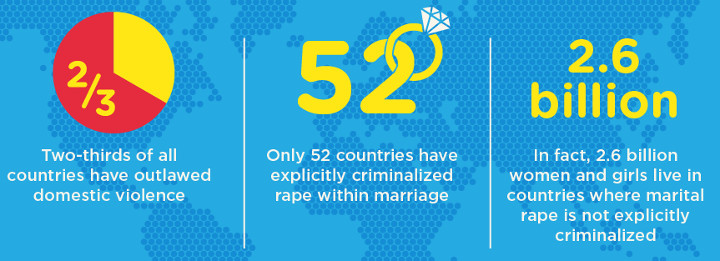
Berlin. - Gender based violence holds back societies in the global south and in industrialized states alike. Saturday, February 14th marks the 4th time the global One Billion Rising event takes place and raises awareness of violence against women worldwide.
Gender-based violence (GBV) is violence that is directed against a person on the basis of gender. Gender-based violence and violence against women (VAW) are often used interchangeably as most gender-based violence is inflicted by men on women and girls. It is estimated that 20 to 25% of women in Europe have suffered physical violence. The number of women who have suffered from other forms of gender-based violence is estimated to be much higher.
A recent European Union-wide study revealed that one in three women has experienced physical and/or sexual violence since the age of 15 and 75% of women experienced sexual harassment in the work place. Although men are victims of street violence, murder and crime as well, violence directed at women is a very different phenomenon. Men tend to be attacked and killed by strangers or casual acquaintances, whereas women are most at risk at home from men whom they trust. But it is important to mention that GBV goes far beyond domestic violence.
In August 2014 most European states signed the Istanbul Convention on preventing and combating violence against women and domestic violence. The document was ratified by 15 countries.
According to a 2013 global review of available data by the World Health Organization (WHO), 35 per cent of women worldwide have experienced either physical and/or sexual intimate partner violence or non-partner sexual violence. However, some national violence studies show that up to 70 per cent of women have experienced physical and/or sexual violence in their lifetime from an intimate partner.
The "billion" in the campaign One Billion Rising refers to the UN statistic that one in three women will be raped or beaten in their lifetime, or about one billion women.

Violence against women is based in the structural inequality between men and women. As such, it must be analyzed and addressed differently than violence among men and against men. Although data collection increased and awareness of GBV as public health concern and obstacle to development is kind of established, there is still a lack of data. Not all crimes are analyzed with sex-segregated data and the relationship between victim and perpetrator is often overlooked. This leads to a lack of awareness and lack of visibility of violence against women. What contributes to this problem is that some forms of GBV are still considered normal or are even institutionalized as cultural practices, such as FGM. However, street harassment for example is rather seen as acceptable or not considered as worse enough to be recognized as a form of violence. Other forms of violence like domestic violence are tabooed, which makes it difficult to address.
Violence against women continues to have an unjustifiably low priority on policy agendas in the global south as well as in industrialized states. A recent article published in the Guardian reports about a new study revealing “that some of the sexism women face – from catcalling and sexual harassment to sexual objectification and violence – makes women generally more fearful and anxious. The researchers from the University of Missouri-Kansas and Georgia State University found a substantive “link between physical safety concerns and psychological distress”."
A new project in the United Kingdom addresses the lack of data and awareness and creates a database of every woman who is killed by a man. The campaign group, the Femicide Census: Profiles of Women Killed by Men, which was launched on Thursday hopes to prompt the government to take action to stem the rise of violence against women.
=> Frauen als Motor der Entwicklung - Gender in der Entwicklungsagenda ohne Männer?
=> UN WOMEN Infographic on Violence against women
Graphics: © UN WOMEN







